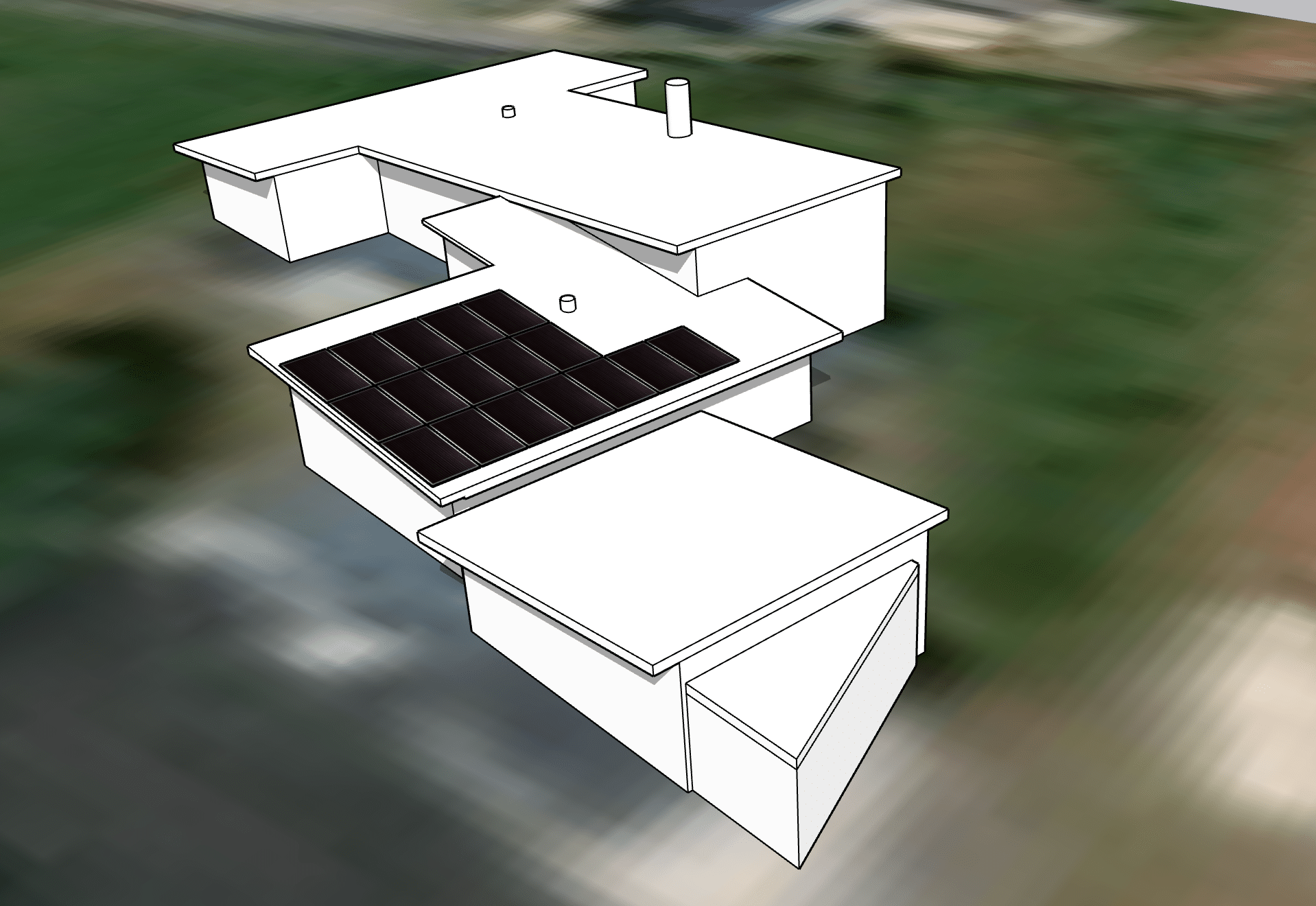Solar & Batteries for New builds
Solar is something most people think about when building. If you or someone you know is building new, it makes sense to start thinking of your home’s energy needs.
I will give you a run through of what you should think about when it comes to solar for your new house. Feel free to email me if you have specific questions about your new build.
Solar Pre Wiring
If solar is not in the budget just yet, pre-wiring can save installation costs and unsightly external cabling down the track.
Any pre-wire we do will then be deducted from the cost of the future installation.

Solar ready – be careful!
Some of our customers have come to us excited that they did the hard work during their build and got the electrician to pre-wire for solar. Unfortunately, more often than not, the wiring is incorrect. The installed wiring serves no other purpose than a draw wire.
I won’t bore you with the details here, but it’s not enough to run an AC cable into the roof space. We are more than happy for your electrician to talk to us and we will guide them through. Or we can just as easily come and do it for you.
Battery Pre Wiring
Battery pre wires are a bit trickier. To pre-wire for a Tesla battery, for example, requires specific cabling.
To make the Tesla battery look the part, it pays to get the cables in the right positions first time. Call us for this one!
Each battery system requires different wiring. If you are not sure which battery system you will go for in the future, then we suggest leaving an area free near your switchboard. This will ensure a battery system can be easily wired in the future.
Cabling/Monitoring
A garage or outbuilding is sometimes the best place to locate solar panels. Most of the time outbuildings are not easy to wire to post build.
It’s important the correct cabling is installed during the build for solar wiring and monitoring.
This is especially true if you are looking at a battery as part of your installation. Due to batteries providing backup power, you need to make sure there are the correct cables for backup functionality. Especially if the best location for the battery is in a separate building like a garage.
Design
The best time to think about solar for your new build is during the design stage. There are tweaks that can make your house much more suitable, save you money and make you much happier with your system.

Roof Angle and Aspect
With the latest solar technology, the angle and aspect of your roof are less critical, however, if you’re able to design your roof right, there are benefits.
The Sun’s path changes throughout the year(Download the Lumos app to check it out in augmented reality), therefore various roofing orientations work better than others at certain times of the year.
East/West aspects work better in Summer and Northern aspects work better in Winter. Any orientation from East through West is good.
Angles between 10º- 50º work well. The steeper the angle, the more energy you will produce in Winter. At angles above 10º solar panels will self clean during rain.
If your roof is 10º or lower, solar will work better by tilting the panels to a steeper angle. Tilting involves extra racking equipment and cost. If it’s an option to steepen your roof up at the design stage, then go with that.
Roofing Type
You can fix solar to almost any roofing type, but while you have the choice you can save money by choosing one that doesn’t require extra fixing for solar.
Roofing types that require no extra fixing:
- Corrugate
- 5-Rib
- Decramastic tile
Roofing types that require extra fixing:
- Standing seam(alpine tray)
- Tile
- Slate
- Solar – rib(this profile is not designed for solar panels)
With the availability of completely black solar panels such as Q-Cells G9+, darker roofing iron can be a good aesthetic match for your solar panels.
Flue & Chimneys
Half cell technology and Fronius’ new MPPT algorithm means that shading is not the solar killer it used to be. Partial shade on panels is now manageable.
In saying that, it is worthwhile to limit shading if possible. Keep roof penetrations such as vents and Flue’s away from roof aspects that can be utilised for solar.
When thinking about the layout of the house, it might be tempting to position your fire on the Northside, however, the flue will likely be right in front of your solar panels.
If possible arrange your lounge, so that the flue comes out of the south side of the roof. Or at least high up on the north side, allowing room for panels below.
Passive House or Airtight House – Get in early
You may be building an energy efficient home or passive house. These homes generally have an airtight layer to prevent heat loss.
As part of your solar installation, you will likely need to penetrate the roof for the solar cabling.
To avoid any air leaks your roof penetrations are best done during the build stage. This way we can seal up the penetration to maintain the airtightness, you don’t want to fail your blower door test!
Roof penetrations on an existing airtight home are doable, but more care needs to be taken to maintain the airtightness.
Purlins/fixing
On a tin roof, solar panels fix to the roof purlins. Designing solar to be part of your build ensures these fixings can be put in the best place for the solar panels.
If you are building new and would like to talk to us about solar on your build, fill out your details below and we will be in touch.
"*" indicates required fields